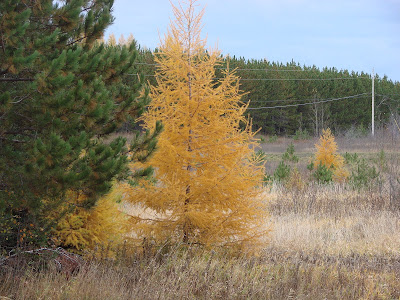
A snowy day, lots of good food, family & friends.

Grandpa & Grampa, Mik & Jeni, Carl & Chris and Obie helped man the tables. Before the meal Mik tried out his rock skis in the yard. Kalevi got excited and bolted across the radio fence. A few minutes later we hear loud barking from the clearcut across the road. David went out and discovered that Kalevi was circling an 8-point buck who was standing in place. David got within twenty feet before it ran off and quickly left Kalevi in the dust.

Obie from Mississippi was our special guest this year. He brought a delicious Pinã Colada cake.
There were several other salads besides the pies & cakes that couldn't fit on the plate yet.

Some of the traditional table decorations.
Following tradition, the 2009-2010 table hockey season began with a bad loss for Carl...

...and another bad loss for Carl. Jonathan ended the day in first place.













































